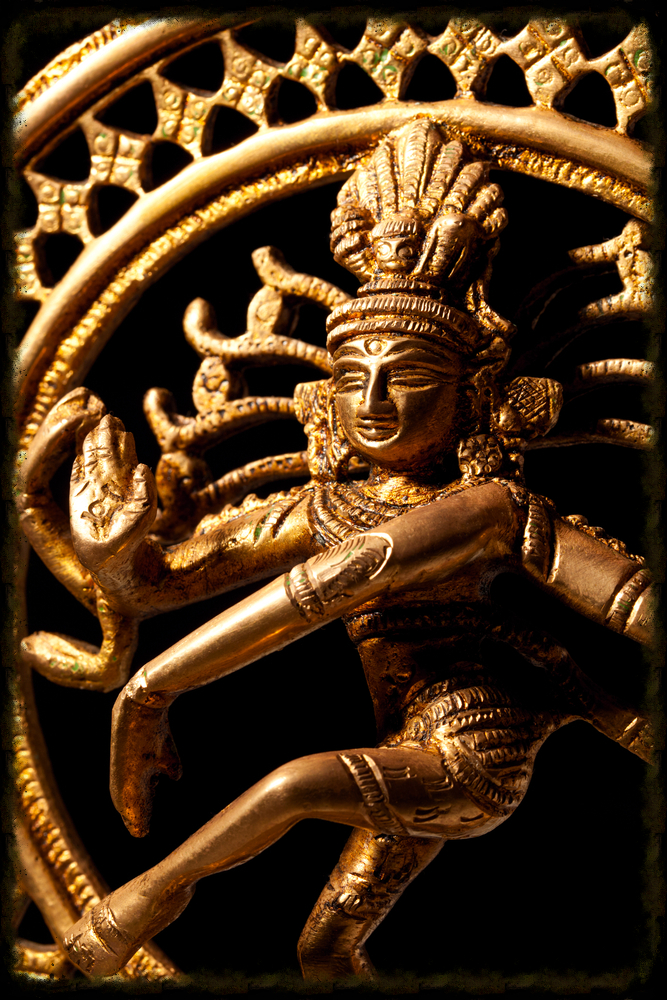“Shiva is silence. Shakti is power. Shiva is creativity. Shakti is creation. Shiva is love. Shakti is loving. These qualities aren’t opposites, but complements, which is a perfect description of a sacred union.”
– D. Chopra
Shiva [Divine Masculine] personifies the energy of transformation from one form to another, or from one consciousness to another, and Shakti [Divine Feminine] becomes Shiva’s transformative  power. From the Oneness, together they dissolve into this Oneness, where the masculine and feminine cease to exist, and the pure consciousness of creation manifests as the Universe. And so, Shiva is the sacred ground on which Shakti creates.
power. From the Oneness, together they dissolve into this Oneness, where the masculine and feminine cease to exist, and the pure consciousness of creation manifests as the Universe. And so, Shiva is the sacred ground on which Shakti creates.
Without the stillness and grounding of Shiva the creative power of Shakti becomes uncontainable, and without the creative energy of Shakti, Shiva is merely a witness lacking the power to create or manifest his creation.
So we come together to balance this Divine Masculine and Divine Feminine within us, and within relationship, to be able to open up to the field of possibilities that exist within this play of Universal Consciousness.
Shiva – A Closer Look
In Sanskrit Shiva indicates “The Auspicious One,” and also refers to the one who is kind and gracious. Shiva also means “the one in whom the whole creation sleeps after dissolution.”
At the highest level, Shiva is respected as limitless, transcendent, unchanging and formless.
As the personification of the Divine Masculine, Shiva is honored as the provider and protector. He is one of the main Hindu deities, and is known as the God of Destruction or transformer, among the Trimurti, which is the Hindu Trinity (re: Brahma the creator, Vishnu the sustainer, and Shiva the destroyer). This holy trinity consists of the chief aspects of the Divine.
Other popular names associated with Shiva are Mahadev, Mahesh, Maheshwar, Shankar, Shambhu, Rudra, Har, Trilochan, Devendra (meaning Chief of the gods) and Trilokinath (meaning Lord of the three realms).
Shiva has many gracious and fearsome forms. In gracious aspects, he is portrayed as a wise Yogi who lives an austere life on Mount Kailash, as well as a householder with wife Parvati and their two children Ganesha and Kartikeya. In more fierce expressions, he is often revealed as slaying demons. Shiva is also esteemed as the patron god of yoga and arts.
Shiva’s dancing (depicted in this article’s imagery) indicates the continuous cyclic process of evolution, preservation, and destruction of the universe. In reality Shiva is not a Being or an entity but the living Universe itself.
Shiva’s primary mission is to destroy many things in order to safeguard the order of the Universe. This destruction is not negative. Rather, it is a positive, supportive and beneficial destruction that cultivates and transmutes life and energy for the wellbeing of the world and identities it contains. He terminates in order to rejuvenate and revitalize. Through destruction he harmonizes the easeful conversion of things and events from one phase to another.
More specifically, Shiva destroys our limitations in order to support our spiritual development. He destroys our illusions, desires and ignorance. He destroys our negative disposition. He destroys our old memories, so that we can move on with the movement of time. He destroys our relationships, attachment, and impurities, physical and mental wrong doings, the effects of bad karma, our passions and emotions and many things that stand between the Divine and us as obstacles to our evolution and inner transformation. And when we have made adequate progress, when we are ready and prepared, and when we are willing without any inner conflict, he destroys death.
View our sacred masculine mala beads and mala bead bracelets here.


